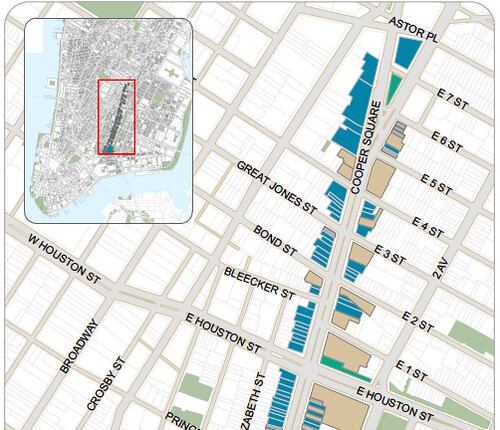With the Bowery now added to the State Register of Historic Places, The Local got hold of the registration form that architectural historian Kerri Culhane and the New York State Historic Preservation Office prepared in order to nominate it. The 171-page document, sponsored by The Two Bridges Neighborhood Council and Bowery Alliance of Neighbors, describes the Bowery as a “Main Street for the Irish, German, and later Chinese immigrant wards that surround it”; “the nexus of many labor and social movements, and a meeting place for labor unions, socialist, anarchists, Nativist organizations, proimmigrant groups, and innumerable others”; and “the center of New York’s working class theatre and entertainment in the nineteenth century; the reputed birthplace of American minstrelsy and adopted home of vaudeville; and home and inspiration to songwriters, including Stephen Foster and Irving Berlin.”
The avenue is also said to comprise “a uniquely diverse catalogue of architectural styles since ca. 1785, including an extensive collection of Italianate, Neo-Grec, and Renaissance Revival commercial lofts, alongside the modest Federal and Greek Revival rowhouses of earlier periods, and the monumental civic and institutional architecture of the late nineteenth through mid twentieth century.” The form, below, also includes architectural histories of each of the avenue’s notable buildings. In case you’re wondering: B Bar, opened in a brick storefront that became a Sunoco service station in the 1940s, is “considered the harbinger of gentrification in the neighborhood.”




